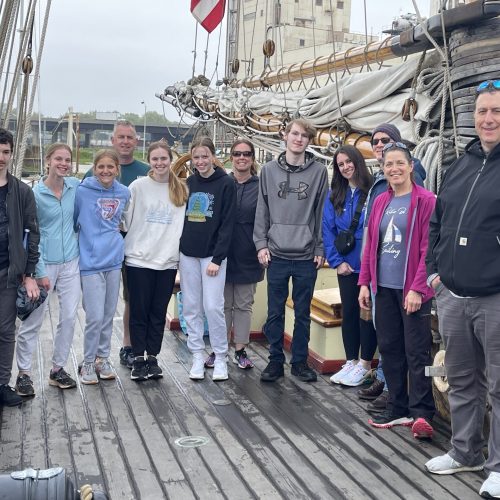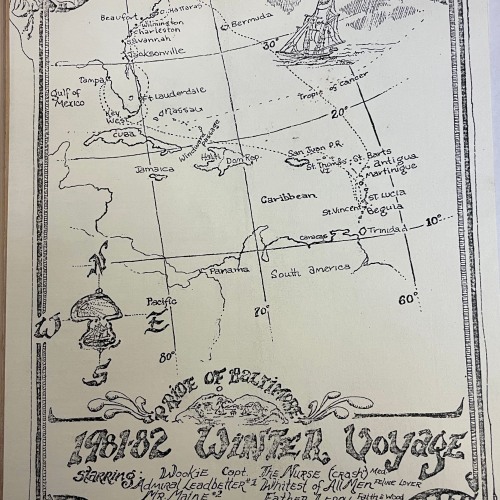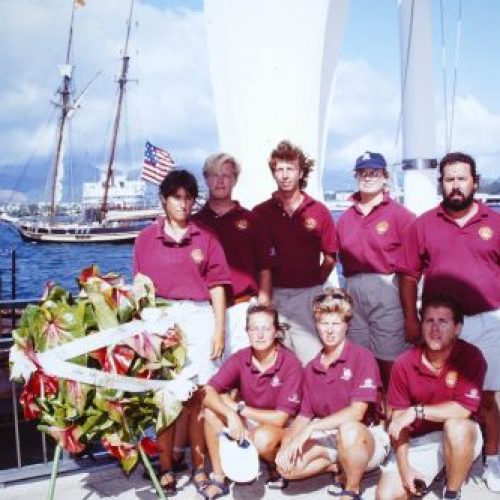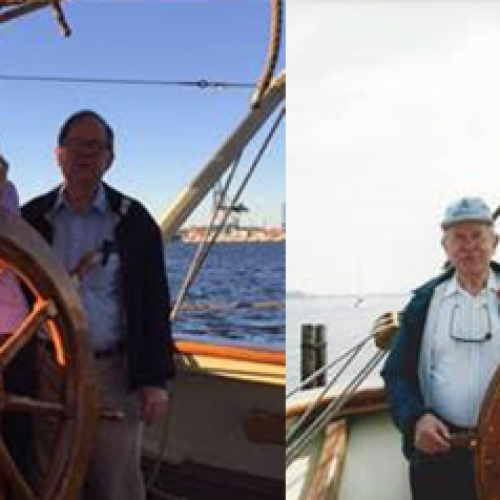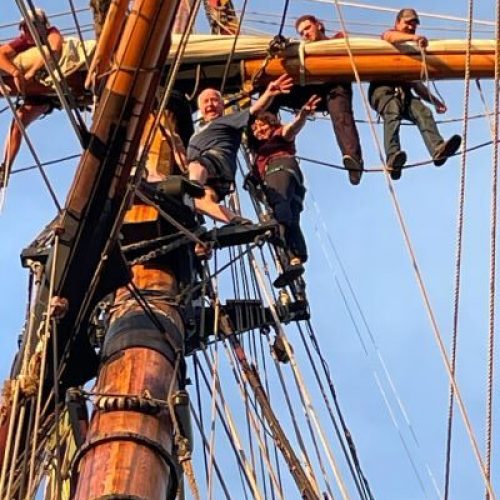Wednesday, 28 August, 2013
Pos: 43 54.1’N x 081 51.2’W
Wx: NNE F 4, Seas 1-2′ Sunny
Pride of Baltimore II under all plain sail, t’gallant and stuns’l. After nearly two weeks of exploring the ports, coves, and islands of the Georgian Bay, Pride of Baltimore II is back on Lake Huron. And at a steady six to seven knots, seemingly won’t be long for this Lake. Departing Midland on Monday after a happily busy festival and a morning of thunderstorms, we’re bound for Windsor via Detroit for some logistics. And while the Georgian Bay is astern of us now, it’s still on our minds – no one aboard was too eager to leave.
It seemed Georgian Bay wasn’t quite ready to be rid of us either. Not long after we sailed away from the dock on a fickle southwesterly breeze Monday, the wind shifted north and embayed Pride II. While a few of the other visiting vessels motored out against the contrary breeze, we stuck to our sailing and, with our sister privateer Lynx joining in from her berth in Penetanguishene, clawed our way back to our old anchorage at Giants Tomb Island until around sunset, when the breeze fell still and the flat water gleamed with rippled orange streaks.
Retracing our steps back toward Tobermory, we alternated between sailing and motor sailing through the night, then picked up the sailing with an unexpected westerly on Tuesday morning, threading our way through the islands off the Bruce Peninsula – Bears Rump, Flowerpot, Middle and Echo – before sailing into Tecumseh Cove, on Cove Island, to join Lynx, who’d motored ahead. We happily spared the crew the back-breaking work of dropping and heaving up the anchor by hooking on to a mooring and settled back to take in the view. The protected cove was rocky, abyssal deep, crystal clear and ringed with lush pine along its steep-to shores. It was perhaps our most remote and sedately beautiful anchorage in the Georgian Bay.
But even more than the natural beauty, the name was significant, particularly for a Baltimore Privateer replica (or two) in this bicentennial year of commemorations. Tecumseh, for whom the cove was named, was the chief of chiefs for the native allies to the British during the War of 1812. He possessed charisma and savvy enough to unite the tribes in common cause to support the British in the hopes that the relentless American expansion Westward could be stopped. But the American victories in Autumn of 1813 destroyed that hope – Perry’s victory on Lake Erie opened the gates for another invasion of Ontario, and ultimately led to the Battle of the Thames, where Tecumseh fell.
In the spring of each year, the staff of the US Naval Academy History Museum give the Pride II crew a special War of 1812 lesson. In it they say, “The War of 1812 was a conflict between the Americans and the British that was won by the Canadians and lost by the Indians.” They’re only partly joking. There’s a satisfying symmetry to the portrayal — two contestants, a winner, and a loser, all arranged like the cardinal points of the compass. But there is a bitter truth to it as well. For the Native Americans, or First Nations Tribes of Canada, there is little to celebrate about the War of 1812, and much to lament and mourn, including the loss of a leader who might have done more to unify the tribes and keep hold of their lands.
So for a quiet evening we enjoyed a view of largely untouched North American interior and in the stillness offered by the cove of his name we had time to remember Tecumseh, and ponder what might be different had he lived. Lynx sailed off near sunset, and the silent cove was ours alone. But closing in on midnight, the light southwesterly shifted northeast and made the mooring untenable. The Georgian Bay, in its magic, spooky way, was telling us it was time. We slipped the mooring and slid away beneath the rise of last quarter moon.
All best,
Captain Jamie Trost and crew of Pride of Baltimore II

